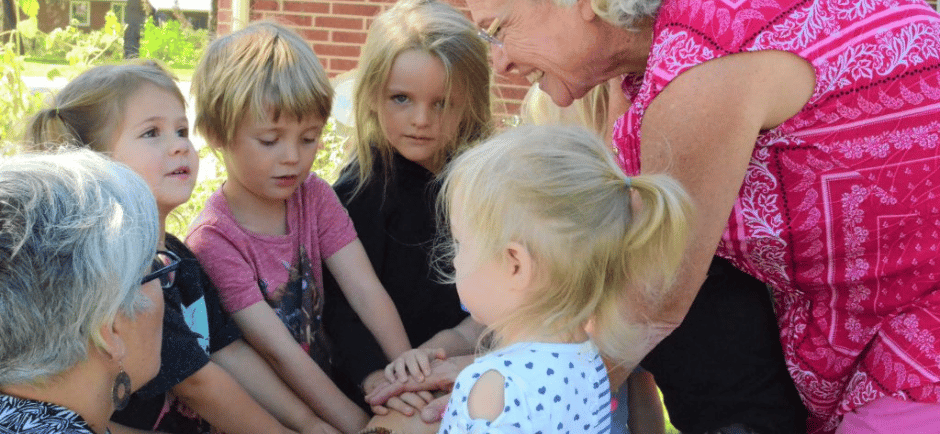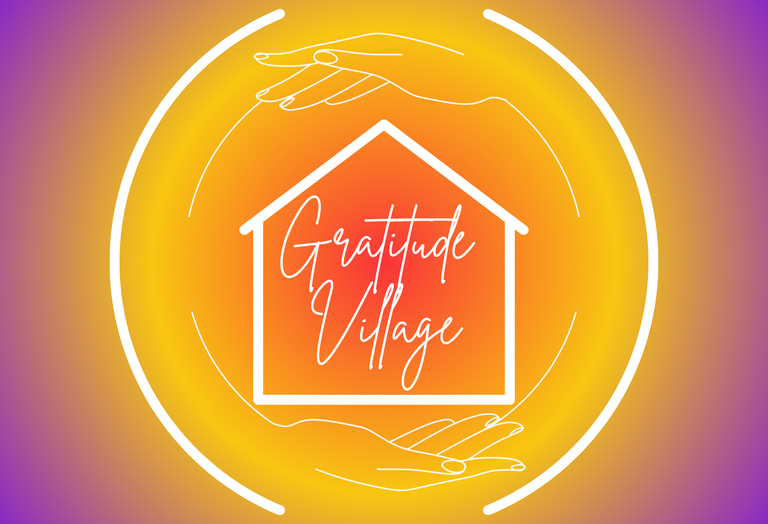Join our next Info Session December 16 from 5:30-6:30 MST Via Zoom (register for link)
Elders and Preschoolers Together: A Timeless Bond in Cohousing Communities
There is something profoundly special about the connection between generations, especially when it comes to elders and young children. When these two groups come together the benefits extend beyond the individuals involved—strengthening the social fabric, deepening communal bonds, and fostering a sense of belonging and purpose for everyone. By integrating elders and preschoolers in day-to-day life, cohousing communities create rich, vibrant ecosystems where all members—regardless of age—contribute to and benefit from the collective.
Gratitude Village
11/13/20244 min read


Elders and Preschoolers Together: A Timeless Bond in Cohousing Communities
There is something profoundly special about the connection between generations, especially when it comes to elders and young children. The relationship between elders and preschoolers is one of reciprocal learning, affection, and shared wonder, offering both age groups unique opportunities for growth and joy. When these two groups come together, as they often do in cohousing communities, the benefits extend beyond the individuals involved—strengthening the social fabric, deepening communal bonds, and fostering a sense of belonging and purpose for everyone.
Cohousing, with its intentional focus on collaboration, mutual support, and shared spaces, provides the perfect environment for intergenerational relationships to flourish. By integrating elders and preschoolers in day-to-day life, cohousing communities create rich, vibrant ecosystems where all members—regardless of age—contribute to and benefit from the collective. The beauty of cohousing is that it encourages meaningful interactions, providing not just a home, but a place where relationships thrive.
The Natural Bond Between Elders and Preschoolers
There is an undeniable magic that happens when elders and young children come together. Children are naturally curious and full of energy, while elders often possess a calm wisdom that can help ground and guide their youthful exuberance. This dynamic creates a symbiotic relationship—preschoolers offer elders a chance to experience the world through fresh eyes, rekindling a sense of wonder and play, while elders provide the patience, stability, and wisdom that can help shape a child’s understanding of life.
Studies have shown that intergenerational interactions benefit both age groups. For elders, spending time with young children can decrease feelings of loneliness, combat depression, and even improve cognitive function. The presence of preschoolers often brings a sense of vitality and purpose, reminding elders of their value within the community. Conversely, children who regularly engage with elders tend to develop stronger communication skills, greater empathy, and a deeper appreciation for the history and knowledge older generations bring. In a world where age-segregation is more common than ever, these interactions provide invaluable life lessons for both the young and the old.
Cohousing: The Ideal Environment for Intergenerational Connection
Cohousing communities, by their very design, create spaces where people of all ages can live, work, and play together. Unlike traditional neighborhoods, where interactions may be limited to fleeting greetings or brief encounters, cohousing is centered around intentional connection. Shared spaces, communal meals, and collaborative decision-making provide countless opportunities for residents to build meaningful relationships. This design naturally encourages intergenerational connections.
For elders, cohousing offers a way to stay actively engaged with their community without the isolation that can sometimes accompany aging. Many cohousing communities have shared living spaces, such as community rooms, gardens, and play areas, where elders and young children can spend time together. Whether it’s an elder reading a story to a group of preschoolers, helping with an art project, or simply offering a steady hand during play, these interactions become an integral part of the daily rhythm of cohousing life.
At the same time, preschoolers benefit from having a broader range of role models within the community. In cohousing, children aren’t just raised by their parents—they are cared for by the entire community. Elders often take on the role of surrogate grandparents, offering emotional support, wisdom, and sometimes even practical childcare. These relationships help children feel more secure and loved, knowing they have a wide network of adults who care for them.
Learning from Each Other: Shared Wisdom and New Perspectives
In cohousing, the learning goes both ways. Elders have the opportunity to pass down stories, traditions, and values that might otherwise be lost in a fast-paced, digital world. They share their knowledge of gardening, cooking, or woodworking—skills that might not be part of a child’s formal education but are invaluable nonetheless. Imagine a community garden in a cohousing village where an elder teaches children the art of planting and harvesting, passing down not only practical knowledge but also lessons in patience and perseverance.
Meanwhile, children offer elders the chance to stay connected with the present. Preschoolers have a unique ability to live in the moment, unburdened by worries about the past or future. Their enthusiasm for life, curiosity, and playfulness can inspire elders to rediscover their own joy in everyday moments. Whether it’s participating in a community art project, sharing a meal, or simply laughing together, these interactions help elders stay socially and emotionally engaged.
Designing for Connection: Cohousing Spaces That Foster Intergenerational Interaction
One of the reasons cohousing is so successful at bringing generations together is that it is designed with connection in mind. Shared outdoor spaces like gardens, playgrounds, and courtyards naturally bring elders and young children together in casual, everyday interactions. Community kitchens and dining halls become places for shared meals and conversations, while multipurpose rooms are often used for intergenerational activities like storytelling sessions, music, and craft workshops.
Cohousing communities can also intentionally design programs that foster relationships between elders and preschoolers. These can include shared playgroups, art classes, gardening clubs, or even informal buddy systems where elders and children are paired up for special activities. In some cases, cohousing communities have developed on-site preschools or childcare programs where elders volunteer, creating even more opportunities for regular interaction.
Building a Future Rooted in Connection
As the world becomes more fast-paced and technology-driven, we risk losing the deep, meaningful connections that come from living in close-knit, intergenerational communities. Cohousing offers an antidote to this trend by creating spaces where people of all ages can come together, learn from one another, and build relationships that last a lifetime.
By nurturing the bond between elders and preschoolers, cohousing communities create a culture of care, connection, and continuity that benefits everyone. These relationships are not only heartwarming—they are essential to the health and vitality of the community. The presence of both the young and the old reminds us that life is cyclical, that we are all connected, and that by working together, we can create a world where every generation is valued and cherished.
In cohousing, the relationship between elders and preschoolers becomes more than just a passing interaction—it becomes the heart of the community.
COMMUNITY
Join us in embracing nature, diversity and connection.
Sustainability
DIVERSITY
info@gratitudevillageco.com
720-689-4821
© 2025. All rights reserved.
AFFORDABILITY
Gratitude Village Inc. is a 501(c)3 charitable corporation that values diversity, equity, and inclusion as essential to our mission
Subscribe to our Substack
Refund Policy




Gratitude Village is a Proud Member of these organizations
